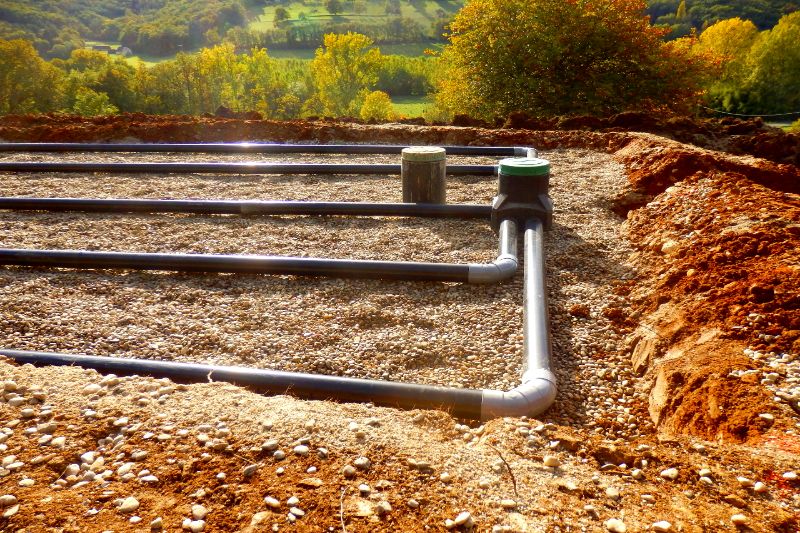When it comes to properly maintaining your home, most people typically concentrate on what they can see. However, proper plumbing and waste removal are necessary, although be it unpleasant, steps to residential construction and maintenance to protect the health of the community. Septic tank systems play a pivotal role in the safe disposal of sewage and are critical in areas with inadequate drainage systems.
What is the Purpose of a Septic System?
Septic systems are made up of larger underground sedimentation tanks used to treat wastewater by providing an environment for proper biological decomposition and drainage. They are mostly used in rural areas where underground sewage systems are not easily accessible.
How do Septic Systems Function?
The design of a septic system is quite simple. Watertight containers, usually made of concrete, fiberglass, or plastic, are placed underground and have inlet and outlet pipes connected to it. The inlet pipes bring in raw sewage from the household, while the outlet pipe moves filtered wastewater out of the septic tank and into the soil.
During the filtration processes, wastewater will begin to separate into three different layers – scum, wastewater, and sludge. The top layer, or scum, is made up of collected oil and grease that floats above all of the waste. The bottom layer of the tank, or sludge, is made up of larger sewage particles that form and separate from the wastewater. Bacteria begins to break down the solid waste, causing it to decompose and drain through the system correctly.
What are the Different Kinds of Septic Tanks?
While all septic systems are designed to manage wastewater treatment efficiently, there are a few different kinds of septic tanks available.
Single Compartment Septic Tanks
As the name denotes, single compartment tanks are made up of an individual container used to separate sewage during water treatment. Typically, these tanks will need to be pumped every three to five years, depending on their size. Once the bottom layer of the tank is about three inches away from the outlet pipe, the septic tank should be pumped to avoid any overflows.
Double Compartment Septic Tanks
Double compartment tanks have a first and secondary containment area for the build-up of scum, liquid, and sludge. Once solids accumulate in the first container, they overflow into a smaller secondary container where they can be further broken down by bacteria.
Pump Tanks
Pump tanks are a bit more advanced than single and double compartment septic tanks and contain a sewage pump, water alarms, and control floats. These systems allow you to limit the amount of effluent that can be sent to the drain field. The benefit that these systems have is the ability to warn the homeowner through audible alarms if there is a potential for overflows or sewage backups. This gives the homeowner time to contact their service company while they take water conservation measures before the septic tank has been emptied.
If you have a septic system at your home or business, don’t wait until there is a problem to have it looked at; it’s important to have it inspected on a regular basis to prevent it from malfunctioning. Knight’s Companies offers commercial and residential septic service and can be reached at (843) 873-3930.

